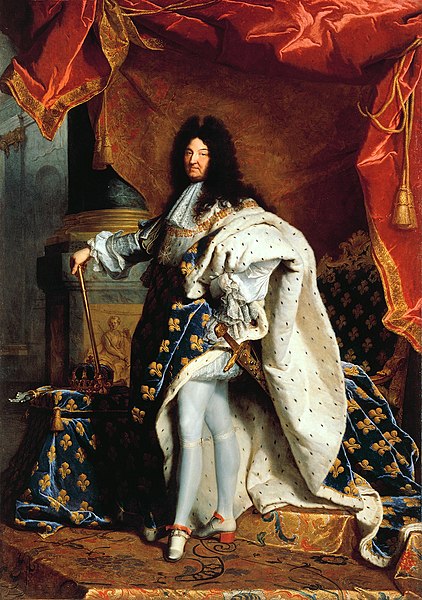Absolute monarchy in France
Absolute monarchy in France slowly emerged in the 16th century and became firmly established during the 17th century. Absolute monarchy is a variation of the governmental form of monarchy in which the monarch holds supreme authority and where that authority is not restricted by any written laws, legislature, or customs. In France, Louis XIV was the most famous exemplar of absolute monarchy, with his court central to French political and cultural life during his reign. It ended in May 1789, when widespread social distress led to the convocation of the Estates-General, which was converted into a National Assembly in June. The Assembly passed a series of radical measures, including the abolition of feudalism, state control of the Catholic Church and extending the right to vote.
Louis XIII in military regalia by Peter Paul Rubens
Portrait of Louis XIV by Hyacinthe Rigaud (1701)
Louis XIII was King of France from 1610 until his death in 1643 and King of Navarre from 1610 to 1620, when the crown of Navarre was merged with the French crown.
Portrait by Philippe de Champaigne, c. 1635
Portrait of Louis XIII by Frans Pourbus the Younger, c. 1616
Half Louis d'Or (1643) depicting Louis XIII
Louis XIII on horseback, c. 1615–1620. Bronze, from France (probably Paris). Victoria and Albert Museum, London






